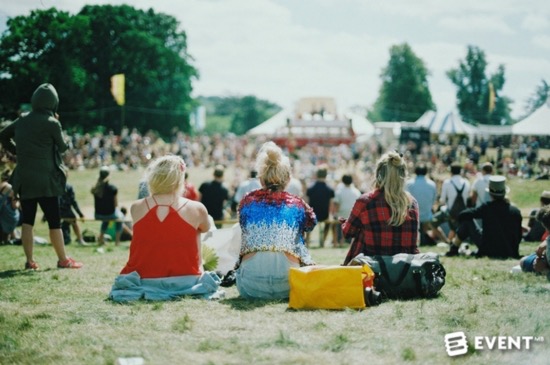Skift Take
As Glastonbury Festival closes its doors on another year, we take a look at the music festival tech being used out in the real world right now.
For just a few days, almost every year since 1970, a dairy farm in the southwest of England sees an epic transformation. The result of that transformation is Glastonbury Festival. Considered by many as one of the world’s great music festivals, it serves as a temporal landmark, informing the world that the British music festival season is now officially underway.
And so it was. From the 21st to the 25th of June 2017, Worthy Farm, Somerset played host to some of the world’s greatest musicians, poets, performers and even a politician on the famous Pyramid Stage and at many other spots dotted around the site.
Music Festival Tech Barometer
Glastonbury’s audience comprises hundreds of thousands of individuals on-site from an exceptionally broad demographic but the true reach extends into many millions through TV, radio and online coverage. For this reason, we feel Glastonbury is a great barometer for music festival technology. In the list below, we’ve highlighted some of the music festival tech trends that we’ve seen at Glastonbury and other festivals so far this year.
1. Live Streaming
This year, Glastonbury was live streamed almost in its entirety via the BBC’s iPlayer service. This was bolstered by the BBC’s extensive TV coverage of the main stage and live coverage spots. Streaming in itself is nothing new but the high production quality of live streams from music festivals like Glastonbury and the sheer volume of content are clear signs that live streaming is no longer a novelty but a standard.
The proliferation of live streaming at music festivals also paves the way for VR (virtual reality) viewing experiences. Although not a feature at Glastonbury, many music festivals, and events are already beginning to get the VR bug. It’s only a matter of time before 100% live streamed coverage becomes 100% live streamed VR coverage.
2. Chat Bots
As music festivals grow, so does the amount of information required to help festival-goers navigate and enjoy the event. There are many ways to achieve this through helpful staff, event apps, bits of paper and of course online resources such as FAQs. With music festivals attracting such a broad demographic, the needs of the audience are many and varied. Too many for one-to-one staff attention to be realistic and too varied for an online FAQ. The solution to this is to use a chat bot like that built by Bournemouth digital agency, Greenwood Campbell for Glastonbury. Chat bots can be pre-programmed with the answers to frequently asked questions and in some cases can learn (using AI) as they go along, reducing the need for human intervention as the system learns.
3. Smart Glamping
Smart glamping is still very much of a novelty at the moment but UK mobile operator, EE was at Glastonbury with examples of what smart glamping can, will and in some cases already does look like. With glamping options already becoming commonplace at music festivals and smart technology becoming more prevalent in every part of our daily lives, what we’re now calling “smart glamping” will soon just be called glamping… or even just camping.
4. The Festival Phone
There’s no doubt that festivals are getting smarter and more connected but for festival goers who really want to party, taking $1,000 worth of smartphone into a heaving mosh pit isn’t a great idea. In many cases, the user will just opt for an old phone they have in a drawer somewhere. As long as it can text and call, that’s plenty good enough. Another option for the serious festival goer is the option to purchase a cheaper phone just for music festivals. When you are thinking about connectivity, are you thinking about these users?
5. Free Power Bank Swaps
FOMO drives interest, engagement, and participation with events on a massive scale through user generated social media but only while people have power in their devices. At Glastonbury, EE helped to keep the crowd connected by offering free power bank swaps. When all the juice is used up and devices are charged, the user simply takes the battery pack to EE’s stand for a fully charged replacement.
6. Urine Powered Lighting
A slightly more unusual piece of eventtech was also in use at Glastonbury this year. Thanks to microbial fuel cells, Glastonbury featured a toilet block for up to 25 people with lights powered by urine.
7. Festival Data Security
Music festivals carry a lot of data which could be useful or profitable for hackers. On top of this, increased connectivity and more reliance on digital technology mean events generate even more data on top of this. For this reason, digital security is paramount.
In Conclusion
All over the world, all year round, music festivals keep artists and fans connected and create everlasting memories for millions. Of course, it’s the performers and their fans that are the most important aspects of the event but music festival technology can help make those connections stronger and those memories even better. Long live music festival technology.





